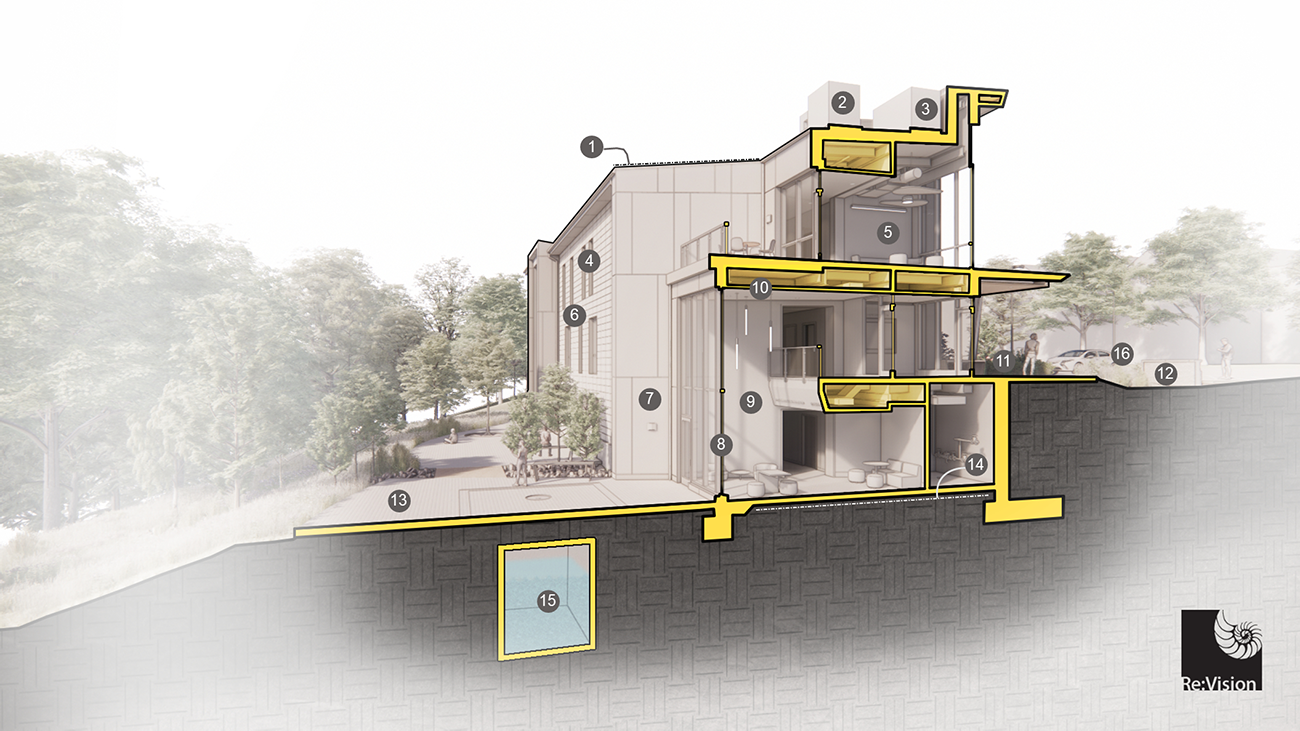The Fahy Commons for Public Engagement and Innovation, Muhlenberg's newest academic building, was designed as a future-forward model of sustainability and flexibility. One of the first 20 projects in the world to achieve the Living Building Challenge Core Green Building Certification, the Fahy Commons will be held as a standard for the most aspiring measures of sustainability in new construction.
Sustainability features include rooftop solar, providing the majority of on-site electricity; triple-glazed windows with bird-friendly glass coating; high-efficiency lighting, heating and cooling systems; native meadows, earthwork and rain gardens; rainwater harvesting systems; outdoor classroom and event spaces; and sustainable commuting options, including an on-site shower and electric vehicle charging stations. View some of the sustainability features incorporated into the Fahy Commons on the diagram below.

- Rooftop Photovoltaics: Supplying the majority of on-site annual electricity.
- Dedicated Outdoor Air Supply: Services 100% of interior spaces with fresh air.
- High-Performance Heating & Cooling System: Reduces fuel demand and provides thermal comfort for all occupants.
- Tripled-Glazed Operable Windows: Ultra energy efficient w/ bird-friendly glass coating.
- Daylight & Views for Interior Spaces: Maintaining a consistent connection to the outdoors within a comfortable and productive environment.
- Terracotta Cladding: Durable and vented, this assembly has lower embodied carbon than traditional TC cladding and is designed for a longer lifespan.
- Air-Sealed Wall Assemblies: Optimized insulation with an airtight, vapor permeable barrier.
- High-Performance Curtain Wall: Triple-pane thermal aluminum curtain wall panels with acid-etched bird safe glazing.
- Biophilic Connections: Including view of forest canopy from main entrance, the building acts as an aperture to the surrounding landscape.
- LED Lighting: Reduced lighting power density 40% below code maximum.
- Universal Site Access: Integrated accessibility for everyone.
- Planted Meadows & Rain Gardens: Native species of vegetation and earthwork to curb stormwater and bolster natural beauty.
- Outdoor Classrooms & Educational Landscape: Permeable paving for stormwater management.
- Insulating Foam Glass Aggregate: Lightweight and created from recycled material, this aggregate provides drainage and thermal insulation.
- Rainwater Cistern: Recycling for toilet flushing.
- Electric Vehicle Charging Stations: Two priority charging spaces to support EV usage.
